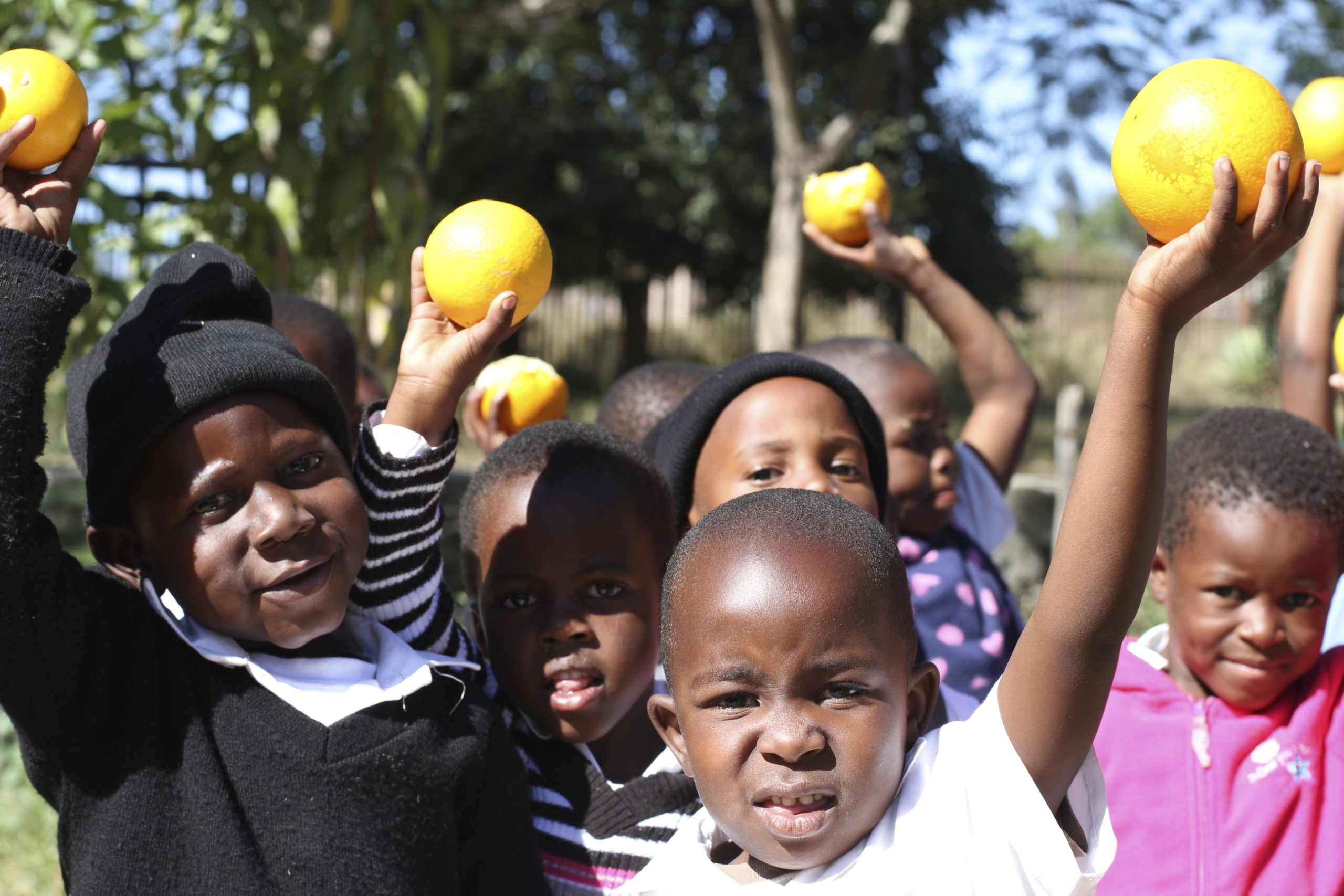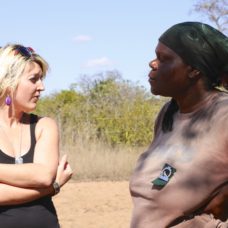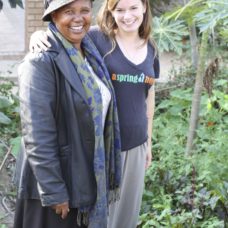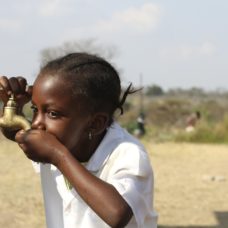
22 Jul 2013 What’s Development Anyway?
 Everyone talks about development. Sometimes changes that look like development are not development at all, and what people say is development isn’t either. In the 8 years I have come to know the Bushbuckridge municipality of Mpumalanga, I have seen some startling new additions to the area. I have seen the informal sector of the economy in Acornhoek expand–making room for new peri-peri chicken stands and car wash shacks. I’ve also seen the dust road to Beretta get paved. I see more houses made of brick, which is a great sign of improved income. Yet, other houses stand two-stories high, are enveloped by high fences, and have their own satellite dishes. These homes are rare, but I have begun to take notice of them, even if the two-story ones are mostly unfinished skeletons cut short by squandered budgets. Overall, the standard of living has stood still with the exception of this elite group of large house owners, often made up of corrupt officials. A majority of Bushbuckridge schools are still without water and access to health care is extremely limited. In fact, South Africa has the highest inequality of any country in the world. So what is ‘development’ in a country where sometimes the old adage is true, “the rich get richer, and the poor get poorer”? Talk to South Africans out here and that’s a rights-based development. Development isn’t “they put a Pick’N’Pay here and bulldozed a school to put in a parking lot,” but the ability to make decisions that affect one’s quality of life, like where to live, work, or go to school. Development isn’t charity, especially not Americans delivering goods to remote areas. It’s about the increased access to rights–the right to one’s own property, one’s own land, education, and choices. I often think about with how A Spring of Hope is contributing to this ongoing struggle for rights. I can see it in the way we help schools become self-sufficient, and empowered community centers. It’s not “aid” or giving material goods away, it’s really partnerships that are behind rights-based development.
Everyone talks about development. Sometimes changes that look like development are not development at all, and what people say is development isn’t either. In the 8 years I have come to know the Bushbuckridge municipality of Mpumalanga, I have seen some startling new additions to the area. I have seen the informal sector of the economy in Acornhoek expand–making room for new peri-peri chicken stands and car wash shacks. I’ve also seen the dust road to Beretta get paved. I see more houses made of brick, which is a great sign of improved income. Yet, other houses stand two-stories high, are enveloped by high fences, and have their own satellite dishes. These homes are rare, but I have begun to take notice of them, even if the two-story ones are mostly unfinished skeletons cut short by squandered budgets. Overall, the standard of living has stood still with the exception of this elite group of large house owners, often made up of corrupt officials. A majority of Bushbuckridge schools are still without water and access to health care is extremely limited. In fact, South Africa has the highest inequality of any country in the world. So what is ‘development’ in a country where sometimes the old adage is true, “the rich get richer, and the poor get poorer”? Talk to South Africans out here and that’s a rights-based development. Development isn’t “they put a Pick’N’Pay here and bulldozed a school to put in a parking lot,” but the ability to make decisions that affect one’s quality of life, like where to live, work, or go to school. Development isn’t charity, especially not Americans delivering goods to remote areas. It’s about the increased access to rights–the right to one’s own property, one’s own land, education, and choices. I often think about with how A Spring of Hope is contributing to this ongoing struggle for rights. I can see it in the way we help schools become self-sufficient, and empowered community centers. It’s not “aid” or giving material goods away, it’s really partnerships that are behind rights-based development.
Andover is a fantastic example of the benefits in investing in these kinds of partnerships. Jonathan Ndlovu, the principal of this primary school just outside of Acornhoek, was thrilled back in 2010 when we found water on school grounds. Today, overgrown grasses and weeds have been cleared out to create dozens of garden beds of beets, onions, garlic, and cabbage. With the help of instruction from Beretta Primary, Andover has been growing nutritious foods for their learners. Jonathan told us parents are eager to send their students to Andover, where they are guaranteed to have healthful foods and fresh drinking water. The quality of life for Andover students is much higher than most public and private schools in the area, largely because of Jonathan’s commitment to quality nutrition.
 South Africa’s tremendous inequality makes it a unique place to conduct development work, especially for the economic opportunities that lie so close to abject poverty. Unlike other impoverished nations, South African communities have the potential for collaboration with far wealthier and more resourced areas. Bushbuckridge, for example, sits between the country’s major international tourism site, Kruger National Park, and many developing tourist towns. Unfortunately, most tourists pass by the extreme poverty on their way to seeing big game, unaware of inequality. Yet, the work of many development professionals here is trying to bridge that gap. Growing up on a game reserve, Sarah Bergs was deeply disturbed by the amount of money pouring into the wildlife tourism industry that did not benefit the province’s poorest communities. She founded Nourish to build ties between the incredible wealth of the tourism industry and the great need of the surrounding community. Crafts have been the main way she’s tried to connect the isolated luxury lodges with the impoverished communities around them. I spent the day with Sarah, an exuberant petite woman (perhaps my double) with little patience for injustice and incredible savvy. A Spring of Hope is funding a borehole at the site of her future Nourish Center, which will host a community garden, after school programs, and other education opportunities. We met up with Jim, a local volunteer, today to check out the site. Barren and unleveled, the grounds currently host a small, beautiful garden nourished only by water carried to the site on the heads of seven local volunteers. In the next few days, we’ll be drilling at Sarah’s Nourish Center. It’s only a matter of weeks before what is already a lovely garden becomes an impressive community asset.
South Africa’s tremendous inequality makes it a unique place to conduct development work, especially for the economic opportunities that lie so close to abject poverty. Unlike other impoverished nations, South African communities have the potential for collaboration with far wealthier and more resourced areas. Bushbuckridge, for example, sits between the country’s major international tourism site, Kruger National Park, and many developing tourist towns. Unfortunately, most tourists pass by the extreme poverty on their way to seeing big game, unaware of inequality. Yet, the work of many development professionals here is trying to bridge that gap. Growing up on a game reserve, Sarah Bergs was deeply disturbed by the amount of money pouring into the wildlife tourism industry that did not benefit the province’s poorest communities. She founded Nourish to build ties between the incredible wealth of the tourism industry and the great need of the surrounding community. Crafts have been the main way she’s tried to connect the isolated luxury lodges with the impoverished communities around them. I spent the day with Sarah, an exuberant petite woman (perhaps my double) with little patience for injustice and incredible savvy. A Spring of Hope is funding a borehole at the site of her future Nourish Center, which will host a community garden, after school programs, and other education opportunities. We met up with Jim, a local volunteer, today to check out the site. Barren and unleveled, the grounds currently host a small, beautiful garden nourished only by water carried to the site on the heads of seven local volunteers. In the next few days, we’ll be drilling at Sarah’s Nourish Center. It’s only a matter of weeks before what is already a lovely garden becomes an impressive community asset.






